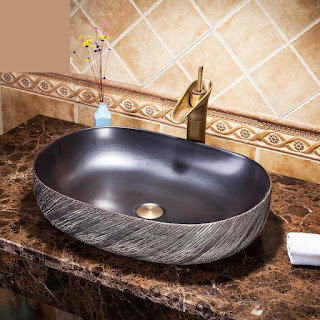How Does an Outdoor Fountain Usually Work?
Even though there are many different styles and shapes of fountains available today, you will find that they tend to work in very similar ways, and they have similar types of parts. In this chapter, we are going to get a better understanding of what each of the parts of the feature is and what it does. When you understand these basics, you should be able to pick out the various parts on the fountains that you see.
In addition, it could help you to determine where the source of a problem might be if something was to go wrong with the fountain.
The Reservoir or Basin or Tank
All of the outdoor water fountains that you will find are going to have a basin or a reservoir. This is simply the term used for the location that holds the water for the fountain.
Additionally, it is generally the location that also holds the pump. There will be areas of the reservoir where the water can flow into and out of it, essentially creating a closed circuit of water.
The Pump
In order for the water to move through the fountain, it is going to need a pump. Some larger fountains may need an external pump due to their size. The pump will generally be located in the water reservoir beneath the water, and it may be partially encased and hidden in a housing.
The goal of the pump it to bring in water via a spinning impellor. This water is then pushed out of the pump using centrifugal force, which causes the water to move from one area of the fountain to another. The style of fountain can differ, but there is always going to be a pump that is moving water in this manner.
Tubing for Water
The water will typically travel through tubing to the other areas of the fountain. Namely, it is going to be traveling from the reservoir through the tubing and up to the next element on this list, the fountain head. The tubing will connect the pump to this area of the fountain.
Water Distribution or Fountain Head
The fountain head of the feature is the area where the water emerges from the fountain and is sprayed into the air or trickles downward and back into the reservoir. Even the air that is sprayed out is typically going to fall back into the reservoir. This is ensuring that the closed circuit of water mentioned earlier continues so the fountain can keep operating.
The Structure
The structure of the fountain simply refers to the style and the materials from which it was made. There is an amazing number of variations for fountains including different materials and different types of fountains. We will be discussing them later in the guide.
Even though there are all of these interesting variations, you will find that the basic design of the fountains are very similar from one to another. Some are going to have additional pumps, and others might have more outlet pipes, so the water can emerge and flow from different areas of the fountain. They might have spray effects, waterfall effects, and other interesting effects.
Even the pond fountains that are available work on a very similar principle. They simply have a pond rather than a standard reservoir.
Great Information to Have
Once you have your own fountain, make sure you get to know all of the different pieces of it and compare them to the pieces discussed in this chapter. When you have at least a basic idea of how a fountain works, the knowledge will let you know just where to look for problems if something were to go wrong with the fountain and you need to troubleshoot it.





Comments
Post a Comment